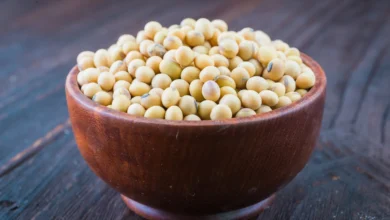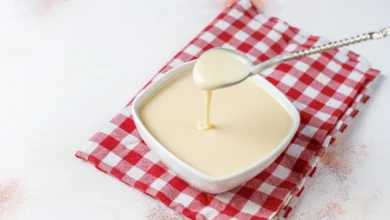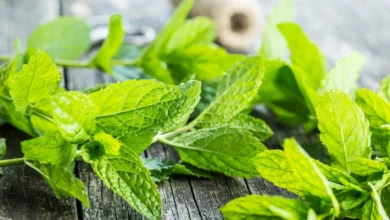Benefits of Cinnamon Leaves and How to Use

The aromatic and warmly spiced scent of cinnamon is something we are all familiar with. As one of the most widely used spices around the world, cinnamon livens up both savoury and sweet cuisines globally. However, its delicious sibling – the cinnamon leaf – remains less well known, despite also having many culinary uses.
Cinnamon leaves originated from Burma, Sri Lanka, Bangladesh, and parts of India, where they have been consumed since antiquity. Though not as commonly found in mainstream supermarkets and grocery stores, cinnamon leaves can occasionally be purchased from speciality markets. Similar to how cinnamon bark spread throughout Europe and the Middle East via Arab traders centuries ago, cinnamon leaves also traversed regions through antiquity. Unlike cinnamon bark, which is made solely from the inner bark of specific Cinnamomum verum trees, cinnamon leaves can be consumed either whole or ground and have a mildly aromatic and warm flavour profile that adds layers of complexity to dishes when cooking. The Cinnamomum verum plant, from which both cinnamon bark and leaves are harvested, actually grows branches laden with leaves as well as its prized inner bark.
Contents
- Benefits of Cinnamon Leaves
- What are Cinnamon Leaves?
- Cinnamon Leaves’ Description:
- Benefits of Cinnamon leaves
- Nutrition Value of Cinnamon Leaves
- How to Use Cinnamon Leaves
- Cinnamon Leaf Oil
- Frequently Asked Questions
- Is Cinnamon Leaf good to drink?
- Are Cinnamon Leaves the same as Bay Leaves?
- How do you use cinnamon leaves?
- What is the treatment of cinnamon leaves?
- What is the best way to take cinnamon daily?
- Can I boil cinnamon leaves?
- What sets cinnamon apart from cinnamon leaf?
- What happens if I drink cinnamon everyday?
- How do you make tea with cinnamon leaves?
- What are Cinnamon Benefits for Females?
Benefits of Cinnamon Leaves
Now, let’s discuss the different benefits of cinnamon leaves in our daily life routine, and how to use them properly.
What are Cinnamon Leaves?
Cinnamon leaves are medium-sized and elongated with a thin, oval and lanceolate shape. They typically taper at both ends, with a central vein that goes from the base to tip. When fresh, the vivid green color and leathery, glossy surface of cinnamon leaves makes the central vein visibly stand out. As young, unripe leaves grow, they display a bright crimson hue that later turns to the familiar vibrant green as they mature. The characteristics of cinnamon leaves differ visually from the bark but produce a similarly warm and aromatic essence when cooked with.
Cinnamon Leaves’ Description:
Fresh cinnamon leaves are medium with an elongated and slender oval, lanceolate shape that tapers slightly at both tip and base. They have a leathery, glossy green surface where the central vein running from end to end is visibly bright against. When young, the leaves display a bright red color which later smoothed into the familiar green shades as they matured. In comparison to bark which cinnamon is perhaps better known for, cinnamon trees have thick branches laden with these defined leaves producing a similar warm flavour and scent even when dried.
When taken as a dish or for eating, cinnamon leaves are frequently dried to retain their potent scent. Much like clove or citrus zest, strong aromatic oils are present within cinnamon leaves, producing a powerful yet musky perfume. Records show cinnamon originated from tropical forests of Burma, Sri Lanka, southern parts of India and Bangladesh on the Indian subcontinent’s Malabar coast. Arab traders first introduced cinnamon to other regions through land and sea routes, spreading its popularity to areas like Babylon, Egypt, Rome and later Europe. Presently, cinnamon leaf cultivation extends beyond its origins to include accessible tropical areas like South America, West Indies, China, Vietnam, Madagascar and various parts of India where soil and climate support the plant.
Benefits of Cinnamon leaves
- Cinnamon leaves contain various vitamins, minerals, and oils that are removed when just the inner bark is added to dietary supplements. When consumed as a hot water tea with the entire leaf ingredient, the beneficial contents can better be absorbed orally.
- One main component found in cinnamon leaf oil is Eugenol, a substance that helps soothe stomach issues like nausea, diarrhea and upset stomach. The presence of cinnamaldehyde has also been shown to lower the chance of developing type-2 diabetes by improving insulin sensitivity.
- Cinnamon leaf essential oil has aphrodisiac characteristics and can improve sexual function for both men and women when inhaled or through aromatherapy. It works to reduce impotence symptoms, potentially due to certain sexual properties in its chemical makeup.
- Burners and vaporizers are devices that employ cinnamon leaf essential oil to treat bronchitis and chest congestion by inhaling its fumes mixed with other helpful essential oils. The warm and spicy fragrance has calming effects to soothe irritation in the lungs and respiratory tract.
- Topical application of diluted cinnamon leaf oil may relieve joint and muscle pain due to its anti-inflammatory oils. Certain compounds like eugenol are also thought to kill bacteria and fungi on the skin.
- A warm cinnamon leaf tea can alleviate mild headaches, boost immunity against common colds and flus, and aid in respiratory and digestive health due to antioxidant compounds and minerals in its profile.
Nutrition Value of Cinnamon Leaves
Cinnamon leaves contain beneficial phytonutrients, including eugenol, which is highly concentrated in cinnamon leaf oil. Eugenol has proved useful in treating various gastrointestinal issues like nausea, diarrhea and stomach aches due to its analgesic and anti-inflammatory properties. Cinnamon leaves also harbour significant amounts of cinnamaldehyde, an organic painkiller compound that shares similar anti-inflammatory characteristics.
The strongly spicy yet musky fragrance of cinnamon leaves is due to certain volatile oils, which impart powerful notes of citrus and clove when inhaled. Unlike cinnamon bark, these leaves remain available in their fresh form throughout the year, allowing for diverse culinary and aromatherapeutic applications.
Cinnamon Leaves Medicinal Uses
Beyond nutritional and culinary value, cinnamon leaves have a long history of medicinal uses. Extracts from the leaves have been utilized in traditional medicine systems to treat abdominal discomfort, respiratory illnesses, and joint or muscle pain. Compounds in cinnamon leaves also demonstrate antimicrobial properties, helping to fight bacteria and fungi when applied topically. Herbal teas made from the leaves function as natural decongestants for bronchitis or colds. Ongoing research continues to uncover additional therapeutic benefits of various compounds concentrated in cinnamon leaves.
RELATED: Benefits of Papaya Seeds
How to Use Cinnamon Leaves
Culinary Uses
Cinnamon leaves are nutrient-rich and can be utilized in a variety of cooking methods and recipes to experience their pleasant taste and perfume. They work well in braised meats, stews, curries, soups, and other savory dishes when used fresh or dried. Cinnamon leaf tea is simple to make by placing a few fresh or dried leaves in steeping boiling water along with other herbs like bay leaves.
Aromatherapy
When used as an essential oil, cinnamon leaves can boost mood and lessen stress through comforting aromas. It can be included in lotions, soaps, and other skin cosmetics for its therapeutic benefits.
Seasoning
As a dried and powdered spice, cinnamon leaves increase the flavour and scent of baked goods, cereals, smoothies and more when used judiciously as a seasoning.
Traditional Medicine
Cinnamon leaf extract and preparations find use in traditional medicinal practices to treat gastrointestinal discomfort and relieve pain.
Benefits of Cinnamon Leaves Tea
Making cinnamon leaves tea allows one to benefit from its various disease-fighting compounds. Cinnamon tea has anti-inflammatory and anti-diabetic properties, and studies show it may help reduce risks of cancer, heart disease and neurological disorders when consumed regularly. The warm, aromatic tea also functions as a digestive aid and can calm an upset stomach.
Cinnamon Leaf Oil
Cinnamon leaf oil is available, which is extracted from the leaves through various methods. It is then used to make a variety of products including perfumes, soaps, and lotions where its warm fragrance can be soothing. Cinnamon leaf oil is also used to make soothing teas and aid in calming an upset stomach when consumed in small doses due to its antispasmodic qualities.
Conclusion
Cinnamon leaves offer an abundant source of nutrients with antioxidants, minerals and volatile oils that provide both health and culinary advantages. From regulating blood sugar to relieving pain, cinnamon leaf extracts and teas have been utilized for centuries in traditional medicine and continue to garner research for new therapeutic benefits. Their warm, spicy yet earthy fragrance also lends itself well to aromatherapy applications. Overall, incorporating cinnamon leaves into one’s diet and wellness routine can support both gastrointestinal and systemic functioning.
Frequently Asked Questions
Is Cinnamon Leaf good to drink?
Drinking cinnamon leaf tea can support overall health as it contains antioxidants and anti-inflammatory compounds that help improve digestion, reduce inflammation and calm an upset stomach. Some studies suggest it may help regulate blood sugar levels and be a good option for diabetes, though more scientific research is needed to fully understand potential health impacts and suitable interaction with medications or blood thinners. When adding to your diet, consult your healthcare provider.
Are Cinnamon Leaves the same as Bay Leaves?
While cinnamon and bay leaves come from different plant species, they have similar uses in cooking and appearances can be confused. Cinnamon comes from the Cinnamomum zeylanicum tree native to Sri Lanka and India, tasting sweet and spicy in cooking throughout Southeast Asia, Africa, and South America. Bay leaves come from the Mediterranean bay laurel tree and add a slightly bitter, pungent flavour to European soups, stews and sauces as well as teas and essential oils.
How do you use cinnamon leaves?
Cinnamon leaves add a sweet and spicy flavour to soups, stews, curries, braised meats and more. You can make tea by substituting cinnamon leaves in place of bay leaves in recipes, or steeping several fresh or dried leaves in boiling water.
What is the treatment of cinnamon leaves?
Cinnamon leaves contain antioxidant, anti-inflammatory, antidiabetic, antimicrobial and anticancer compounds and have been reported to help treat neurological disorders like Parkinson’s and Alzheimer’s diseases.
What is the best way to take cinnamon daily?
The best way to boost daily cinnamon consumption is to add a pinch to favorite meals, snacks and drinks like oatmeal, baked goods, smoothies, and chia pudding for extra flavour.
Can I boil cinnamon leaves?
Cooking cinnamon leaves is commonly done by boiling them to make herbal tea.
What sets cinnamon apart from cinnamon leaf?
Compared to cinnamon bark essential oil, cinnamon leaf oil has a lighter, muskier scent described as clove-like and pungent rather than warm and sweet. Notice the difference if you smell them side by side.
What happens if I drink cinnamon everyday?
Drinking one teaspoon of cinnamon cassia tea daily is generally safe, but consuming excess amounts regularly from tea could impact the liver due to coumarins. An occasional cinnamon tea is unlikely to cause problems, but drinking large amounts of cassia cinnamon tea long-term may increase risks of liver disease or blood thinning.
How do you make tea with cinnamon leaves?
To make cinnamon leaf tea, add a few fresh or dried leaves to a tea bag or simply place a few ground leaves in a cup. Then pour hot water over it, cover and let steep for 5 minutes before enjoying the lovely aromatic tea. If desired, you can sweeten with your favorite sweetener..
What are Cinnamon Benefits for Females?
Additionally, cinnamon provides several benefits specific to females. Studies have shown its compounds can help regulate the menstrual cycle by balancing hormones. It may also increase blood flow to the uterus and boost fertility. Drinking cinnamon tea has been found to relieve symptoms of polycystic ovary syndrome. The anti-inflammatory and antioxidant properties in cinnamon assist with weight loss and heart health promotion as well. By aiding digestion and immunity, cinnamon leaf consumption offers overall support for the female body.




